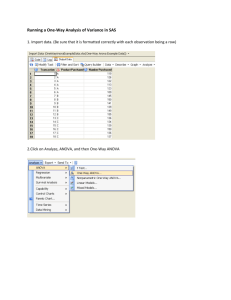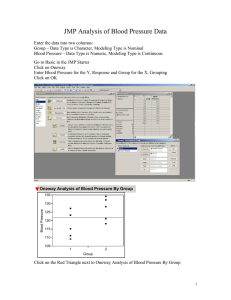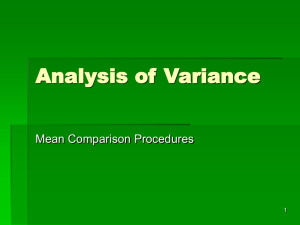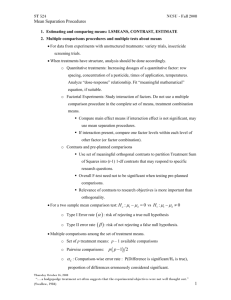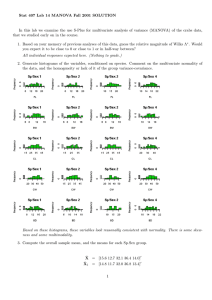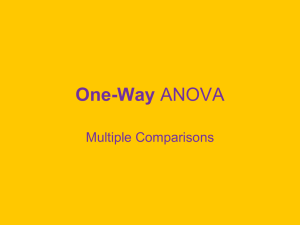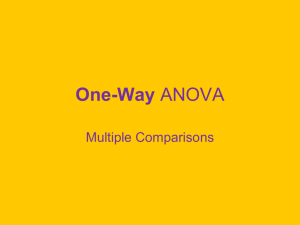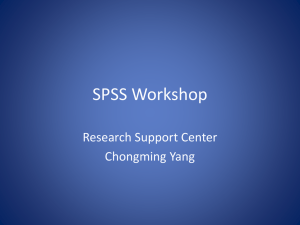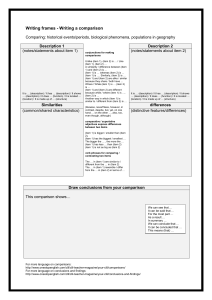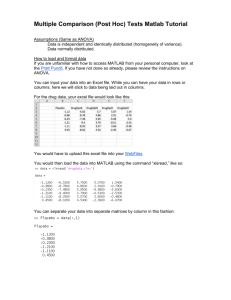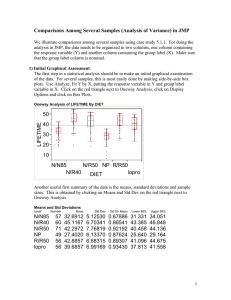Oneway ANOVA - Personal Web Pages
advertisement
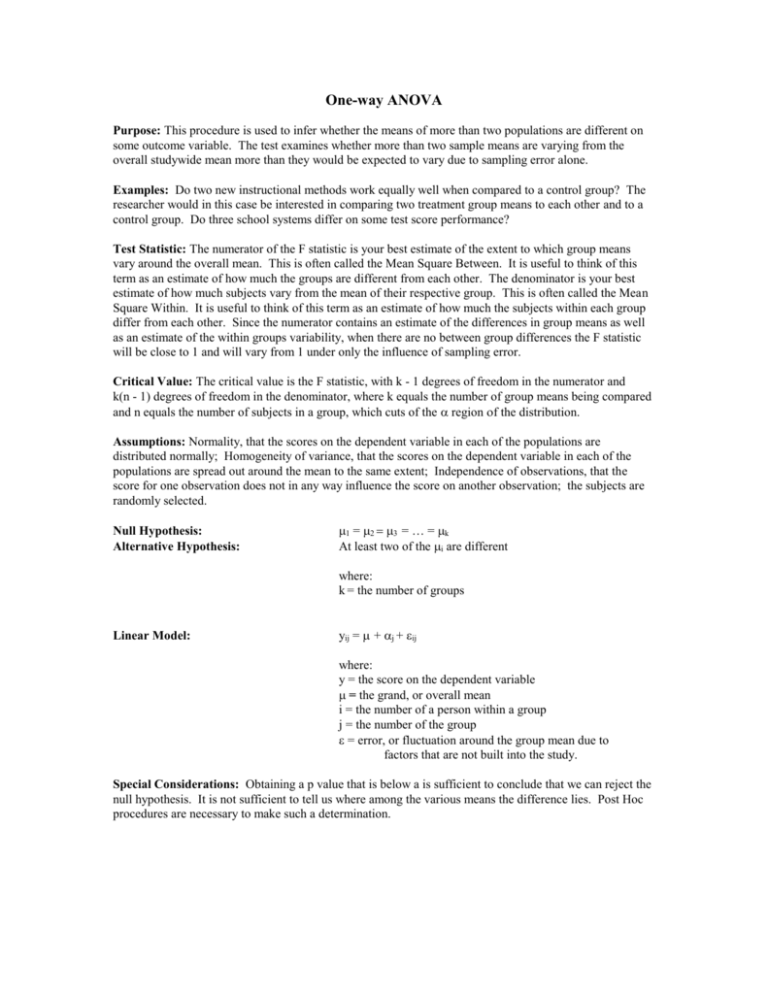
One-way ANOVA Purpose: This procedure is used to infer whether the means of more than two populations are different on some outcome variable. The test examines whether more than two sample means are varying from the overall studywide mean more than they would be expected to vary due to sampling error alone. Examples: Do two new instructional methods work equally well when compared to a control group? The researcher would in this case be interested in comparing two treatment group means to each other and to a control group. Do three school systems differ on some test score performance? Test Statistic: The numerator of the F statistic is your best estimate of the extent to which group means vary around the overall mean. This is often called the Mean Square Between. It is useful to think of this term as an estimate of how much the groups are different from each other. The denominator is your best estimate of how much subjects vary from the mean of their respective group. This is often called the Mean Square Within. It is useful to think of this term as an estimate of how much the subjects within each group differ from each other. Since the numerator contains an estimate of the differences in group means as well as an estimate of the within groups variability, when there are no between group differences the F statistic will be close to 1 and will vary from 1 under only the influence of sampling error. Critical Value: The critical value is the F statistic, with k - 1 degrees of freedom in the numerator and k(n - 1) degrees of freedom in the denominator, where k equals the number of group means being compared and n equals the number of subjects in a group, which cuts of the regionf the distribution. Assumptions: Normality, that the scores on the dependent variable in each of the populations are distributed normally; Homogeneity of variance, that the scores on the dependent variable in each of the populations are spread out around the mean to the same extent; Independence of observations, that the score for one observation does not in any way influence the score on another observation; the subjects are randomly selected. Null Hypothesis: Alternative Hypothesis: 1 = 2 3 = … = k At least two of the i are different where: k = the number of groups Linear Model: yij = + j + ij where: y = the score on the dependent variable = the grand, or overall mean i = the number of a person within a group j = the number of the group = error, or fluctuation around the group mean due to factors that are not built into the study. Special Considerations: Obtaining a p value that is below a is sufficient to conclude that we can reject the null hypothesis. It is not sufficient to tell us where among the various means the difference lies. Post Hoc procedures are necessary to make such a determination. One-way ANOVA Additional Considerations 1. Post Hoc procedures have the following purposes: a. To identify where differences between cell means lie. b. To control the overall Type I error rate across the study. 2. The Tukey HSD or Tukey-Kramer procedures are generally considered the preferred post hoc procedures for the following reasons: a. The overall Type I error is controlled at the nominal level. b. The format of all possible pairwise comparisons is easy to interpret and often of practical and theoretical value. c. The procedures are fairly powerful. 3. The Tukey HSD procedure assumes equal variances and equal cell sizes. The Tukey-Kramer procedure allows for unequal cell sizes replacing cell size with the harmonic mean of the cell sizes in the equation. 4. The Scheffe procedure is also commonly used. It is a more conservative procedure than the Tukey procedures but has additional flexibility. It can be used to test all possible pairwise comparisons as well as to test all possible complex contrasts. Complex contrasts consist of comparisons made between means that allow one or both sides in the comparison to be a combination of cell means. 5. Planned comparisons can be thought of as analogous to t-tests that test the following hypothesis: 1 - 2 = 0 One simply assigns weights to cells means in order to designate how much each cell mean contributes to 1 or 2. 6. It is often desirable to test a set of planned comparisons or contrasts. It is important to keep all pairs of comparisons orthogonal to each other or independent of each other in the set of contrasts. In this way you assure that you are not using any of the information in the dataset in too many comparisons. Two contrasts are orthogonal if the following rules are met: a. The sum of the coefficients within a contrast equals 1. b. The sum of the products of corresponding coefficients equals 0. 7. Oneway ANOVA is generally considered to be robust to violations of normality. It is also considered robust to violations of equality of variance provided that cell sizes are equal or close to equal. It is sensitive to violations of the independence assumption, to the combination of unequal variances and unequal cell sizes, and to the presence of outliers. 8. Multivariate Oneway ANOVA, or Oneway MANOVA, is useful for simultaneously testing multiple dependent variables. It is a straight forward extension of the Oneway ANOVA technique and one is justified in examining univariate Oneway ANOVAs as part of a follow-up to a Oneway MANOVA. MANOVA has the following advantageous properties: a. Control the Type I error rate. b. Include the correlation of the dependent variables in the analysis. c. Can detect differences that univariate analyses can not.
